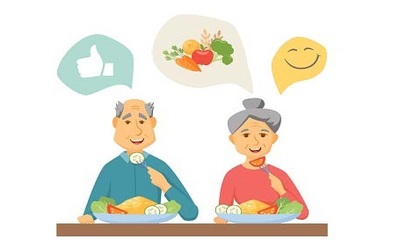Just like a car, our body works best when it is well maintained and receives the proper amount of quality food.
[the_ad id=”14222″]
Also like a car, the older our body gets the more likely it is to break down in some way or another. This is especially true for elders, whose nutritional needs are different than any other age group. As we get older we often need fewer calories because we are less active than when we were younger. This means choices of elderly people must be nutrient dense and not energy dense and every calorie they consume must be packed with nutrition in order to hit the mark.
1. Protein
Protein needs increase with age for strength and mobility. It is essential that any older person with a medical condition requiring an increase in protein is provided with an adequate intake.
Sources: Good sources of dietary protein: red meat, fish and poultry, eggs, cheese and pulses (peas, beans and lentils).
2. Calcium & Vitamin D
Calcium & Vitamin D play many roles in the body. Unfortunately, consumption of calcium is less through diets in old age; hence body starts getting calcium out of bones, making elderly people at risk of brittle bones and fractures.
Sources: Help yourself to daily servings of milk and other dairy products. Other sources are broccoli, fortified juices & cereals. One of the best ways for Vitamin D is exposure to sunlight during morning hours. Few foods naturally contain Vitamin D; fish, eggs, mushroom. Smoothie made with curd, fruit, and vegetables is a good option for people with trouble in chewing or lost appetite.
3. Dietary Fiber
Fiber helps promote healthy digestion by moving foods through the digestive tract, also provides protection against heart disease. Sadly, most older people only get about half the recommended levels.
Sources: Increase intake of whole grains, nuts, beans, fruits, and vegetables. Family can help their elders in getting enough fiber by making snacks out of these food sources.
4. Omega-3 Fats
Omega 3 Fatty Acid is found primarily in fish, have a wide range of benefits; that includes keeping the brain sharp, protection against heart disease and reducing risk of arthritis.
Sources: Help yourself to at least two servings of Omega-3-Fats a week. Eat fish such as salmon, tuna; vegetable sources include soybeans, walnuts, flaxseed, and canola oil.
5. Folic Acid
A deficiency in Folic acid intake can lead to the development of Anemia. Folic acid is destroyed by prolonged cooking, as well as poor food choice, ie. ‘tea and toast’ diet.
Sources: Older people whose diets don’t include a lot of fruits and vegetables, liver, kidney or fortified breakfast cereals may be falling short of the recommended level. Always make sure an adequate vitamin C intake is needed to ensure sufficient iron absorption.
Other factors such as adequate fluid intake and physical exercise are also very important. Advantages of physical exercise on health have been shown in people in their 90th year, so it is never too late to start.
Source:

